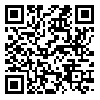BibTeX | RIS | EndNote | Medlars | ProCite | Reference Manager | RefWorks
Send citation to:
URL: http://tbj.ssu.ac.ir/article-1-89-en.html
Background: To control the spread of pathogens in hospital environments, good hygienic routines are required to disinfect surfaces contaminated with biological materials. Chemicals have traditionally been used to disinfect surfaces during final room disinfection. However, chemical disinfection is both time- and labor-consuming, and it might be harmful for staff and the environment. The search for more environmentally friendly and healthier methods has therefore been under way for many years. UVC light (200-280 nm) has germicidal effect on microorganisms in water, on surface, and in air. However, its lethal dose for various microbes is different. In this study, the dose of UVC lamps (wavelength 254 nm) in hospital operating rooms of Shahid Sadughi Burn Center were measured and its disinfectant strength was compared with a standard chemical disinfectants (Cornex).
Method: In this cross-sectional descriptive study at first the UVC irradiance levels were measured after 14 houres light exposure at the outset. The distance between the measurement locations was 50 Cm and the radiometer was put on the 80 Cm height of the floor. In addition the UVC irradiance levels were measured in 15 other sites including surfaces on the table, bed, door handle, inside the rack etc. Microbial samples were obtained from surfaces in isolated units before and after standard hospital environmental cleaning, irradiation with UVC and cornex disinfection. Samples were collected using standard contact plates and were compared together .
Result: The results of this study showed that the UVC detected dose was 0-37951 j/m2. Also the results showed that UVC markedly reduced the number of bacteria on surfaces in operating rooms, from a mean of 64.80 cfu per sample to 41.67 cfu per sample after UVC disinfection and to 16.53 cfu per sample after additional cornex disinfection. So the use of UVC and of cornex disinfection alone or in different combinations significantly reduced the amount of surface contamination (P< .001 for both)
Conclusion: According to the results obtained, the detected dose in about half part of the locations was almost 0 j/m2, while in the places near to the lamps the detected dose was higher than the required dose for resistant virus inactivation due to long time exposure. Therefore it is concluded that the number, locations of the UVC lamps, and also the exposure time should be changed according to the standard dose for all parts of the room. On the other hand, UVC is not suitable and efficient disinfectant for the sites that are in shadow. There fore,these places must be disinfected by a combination of UVC and chemical disinfectants.
| Rights and permissions | |
 |
This work is licensed under a Creative Commons Attribution-NonCommercial 4.0 International License. |





